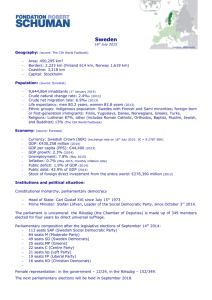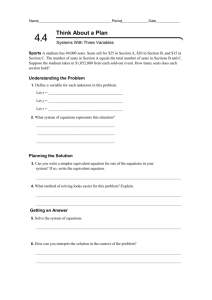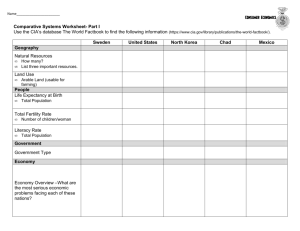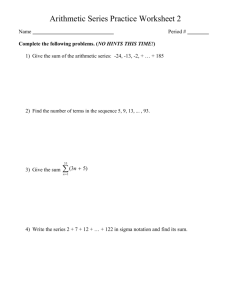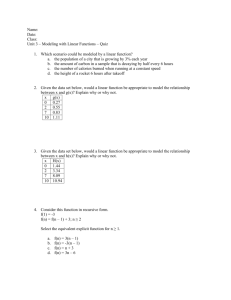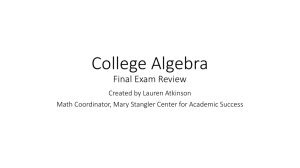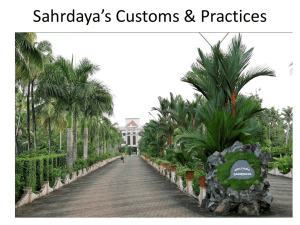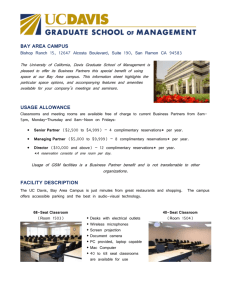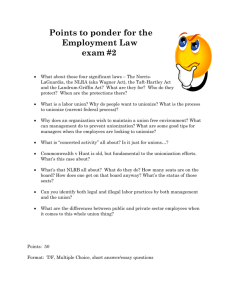Slovenia
advertisement
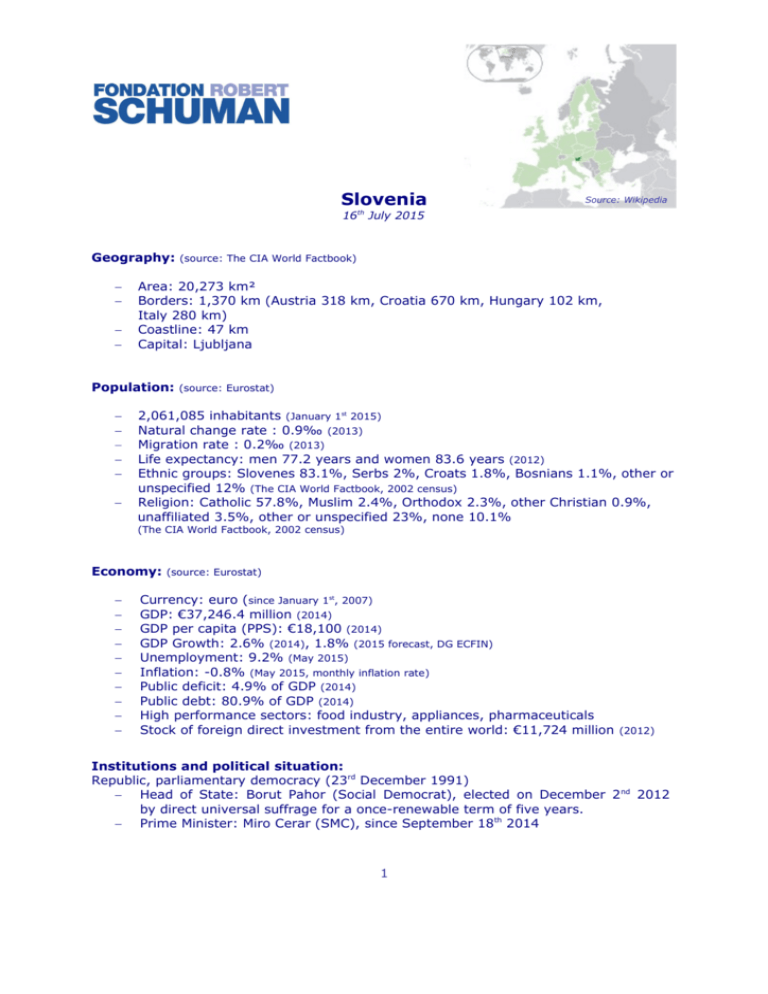
Slovenia Source: Wikipedia 16th July 2015 Geography: Area: 20,273 km² Borders: 1,370 km (Austria 318 km, Croatia 670 km, Hungary 102 km, Italy 280 km) Coastline: 47 km Capital: Ljubljana Population: (source: The CIA World Factbook) (source: Eurostat) 2,061,085 inhabitants (January 1st 2015) Natural change rate : 0.9‰ (2013) Migration rate : 0.2‰ (2013) Life expectancy: men 77.2 years and women 83.6 years (2012) Ethnic groups: Slovenes 83.1%, Serbs 2%, Croats 1.8%, Bosnians 1.1%, other or unspecified 12% (The CIA World Factbook, 2002 census) Religion: Catholic 57.8%, Muslim 2.4%, Orthodox 2.3%, other Christian 0.9%, unaffiliated 3.5%, other or unspecified 23%, none 10.1% (The CIA World Factbook, 2002 census) Economy: (source: Eurostat) Currency: euro (since January 1st, 2007) GDP: €37,246.4 million (2014) GDP per capita (PPS): €18,100 (2014) GDP Growth: 2.6% (2014), 1.8% (2015 forecast, DG ECFIN) Unemployment: 9.2% (May 2015) Inflation: -0.8% (May 2015, monthly inflation rate) Public deficit: 4.9% of GDP (2014) Public debt: 80.9% of GDP (2014) High performance sectors: food industry, appliances, pharmaceuticals Stock of foreign direct investment from the entire world: €11,724 million (2012) Institutions and political situation: Republic, parliamentary democracy (23rd December 1991) Head of State: Borut Pahor (Social Democrat), elected on December 2 nd 2012 by direct universal suffrage for a once-renewable term of five years. Prime Minister: Miro Cerar (SMC), since September 18th 2014 1 Bicameral parliamentary system: The National Assembly (Državni zbor) is composed of 90 members elected for four years by direct universal suffrage through proportional representation The National Council (Državni svet) is made up of 40 members, elected for five years by representatives from unions and local communities Composition of the National Assembly after the July 2014 elections: 36 seats Mira Cerarja Party (SMC) 21 seats SDS (Democratic Party) 10 seats De-SUS (Democratic Pensioners’ Party) 6 seats United Left (DSD, IDS, TRS) 6 seats SD (Social Democratic Party) 5 seats NSi-KLS (New Slovenia-People’s Christian Party) 4 seats Alenka Bratusek Alliance (ZAAB) 2 seats Italian and Hungarian Communities Female representation: in the government: 6/17 in the National Assembly: 34/90 in the National Council: 3/40 Next elections: presidential in 2017 and parliamentary in 2018. 2
